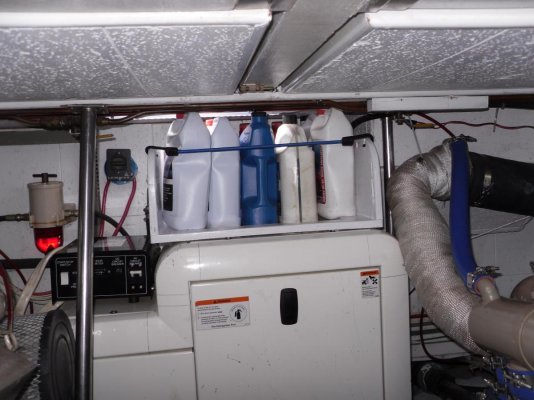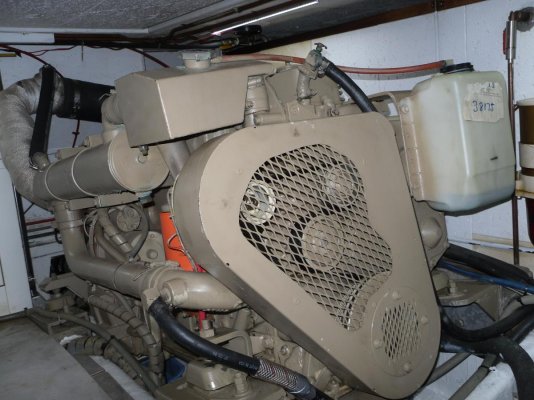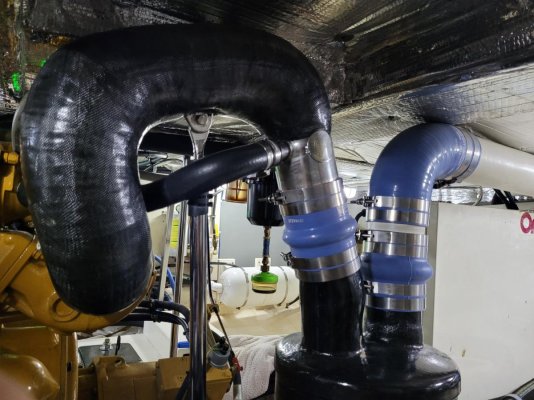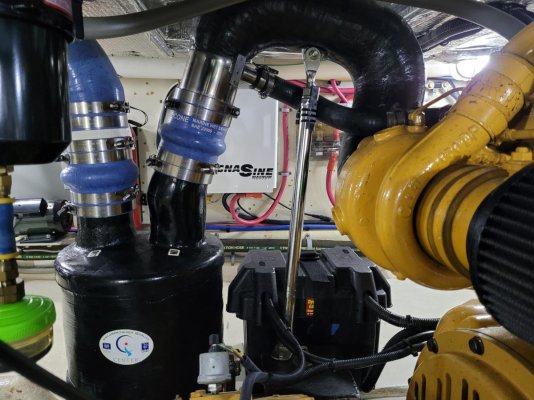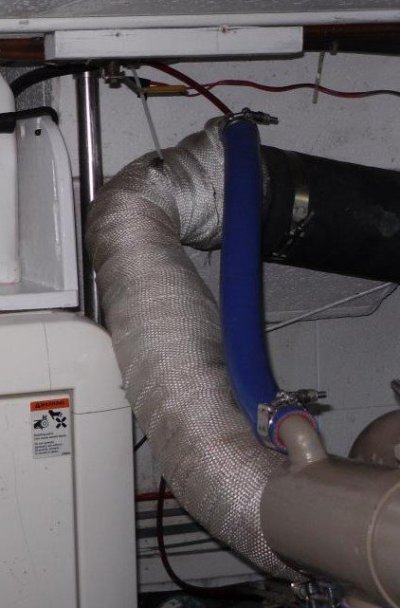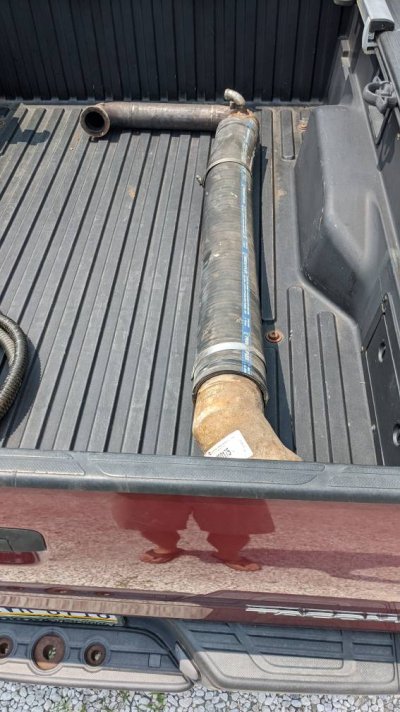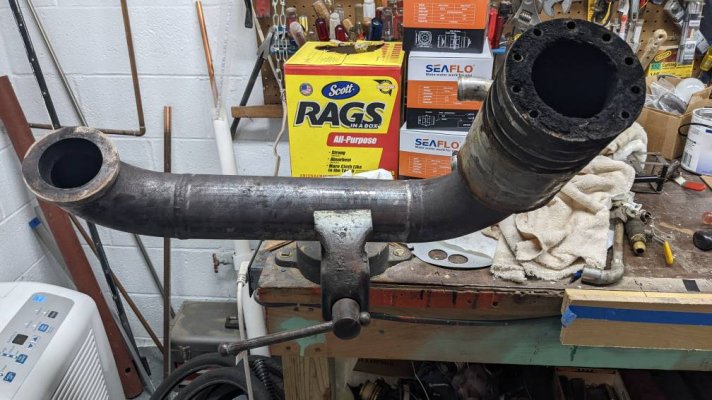Dave,
One last word of caution. My old exhaust elbow looked great (almost new looking) on the outside. It was an original Cummins stock (installed when the boat was built) SS elbow that was then about 16 years old with approx. 2000 hours on the engine. When it came back from the radiator shop all "cleaned up" with the interior carbon and soot build up removed, there were several visible interior perforations (leaks), causing the cooling shower spray pattern to no longer be as effective as designed.
There was no visible leaking or any other exterior signs of trouble. The only thing that warned me that I had a problem starting was an exhaust hose overheat alarm I had installed. The hose was staring to "cook" (in spots), and if left long enough it could have failed flooding the bilge and ER with hot salt water and exhaust gases!
As troubling as that could have been, my factory installed "setup" was what Tony Athens terms "doomed to fail", and again if left, could have led to salt water entering my turbo (a fairly common problem) or worse yet entering the engine itself though the exhaust manifold. Luckily, despite this poor installation setup, no damage was done to either the turbo or engine. I got lucky, and I don't like to rely on luck! I replaced the Cummins elbow with a custom made dry elbow to ensure that the water was injected BELOW the level of the turbo, effectively using gravity to protect my important equipment (water does not like to run uphill

). Tony Athens has good info on exhaust design on his website (sbmar.com), and Steve D. has given good info and advice as well.
I suggest giving this (all the info and advice and your equipment) a good checkover to
potentially save a (big) future issue.
Again, your boat, your money, your time. Good luck.

